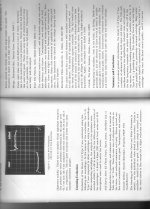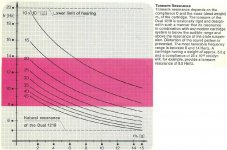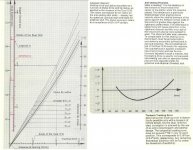Shifty Distortions...
So 'blameless' stages can never be completely regarded as such ?.
Dan.
So input stage, intermediate stages, and output stages individual transfer functions combined with feedbacks all conspire to produce overall transfer functions that change according to audio signal level and spectral content ?.Most interesting distortions do not have a static transfer function applicable at the output only. One of the most important and simplest is the input pair transfer function. This can not be applied a posteriori in this simple fashion so these tools have limited use.
So 'blameless' stages can never be completely regarded as such ?.
Dan.
Rather, to add in a representative type of distortion and see if we can hear it in comparison with a 'clean' track. A bunch of 2nd, 3rd, maybe a few more and their IMD products would do the trick.
jan
I have prepared a similar test for our local audio forum, several days ago. 4 musical samples (Bach, Brandenburg concerto no. 1)
1) original
2) original + pure 2nd harmonic, 1% (-40dB) at FS sine (remember it is only about 0,1% at -20dBFS and that we do not listen to pure sine, so components are always below -30dBFS approx.)
3) original + pure 3rd harmonic, 1% re FS
4) original + 3rd -50dB, 5th -60dB, 7th -70dB, 9th -80dB, 11th -100dB, 13th -110dB, 15th -120dB and 19th -100dB.
This pattern looks horrible (as an image), but it creates only 3rd -90dB when used for sine -20dBFS !!
The samples were (are) downloadable. Almost no one was able to tell any difference, until the distortion used was revealed. I have also prepared difference tracks. There is almost no difference between original and sample no.4, in a difference file.
music samples:
ukazka1.wav | Ulo?.to
ukazka2.wav | Ulo?.to
ukazka3.wav | Ulo?.to
ukazka4.wav | Ulo?.to
difference files:
ukazka2-ukazka1.wav | Ulo?.to
ukazka3-ukazka1.wav | Ulo?.to
ukazka4-orig.wav | Ulo?.to
You can try it if you want, but I will have no time for a usual endless discussion here.
Static distortion like this is almost or fully inaudible. Static harmonic distortion cannot explain difference in sound of two amplifiers. There is nothing like nice distortion. 2nd harmonic itself is not nice, sounds horrible. Every added distortion can only worsen the original sound, in case if it is audible.
has anyone ever seen a "reasonable", "useful" circuit that adds isolated high odd order harmonic? - I don't think I have
tanh, clipping, deadbands add odd or all harmonics, at worst uniform level with harmonic order, usually declining with increasing order
loop gain roll off can modify this - but as Putzeys points out really high loop gain is both easy and seldom seen in analog audio power electronics - 60+ dB loop gain at 20 kHz is still squashing the high order harmonics of mid band music signals to the noise floor for half decent "linearized first" feedback amps
tanh, clipping, deadbands add odd or all harmonics, at worst uniform level with harmonic order, usually declining with increasing order
loop gain roll off can modify this - but as Putzeys points out really high loop gain is both easy and seldom seen in analog audio power electronics - 60+ dB loop gain at 20 kHz is still squashing the high order harmonics of mid band music signals to the noise floor for half decent "linearized first" feedback amps
I now suspect that the reason that SY's cartridge was NOT imported into the USA was because it probably violates some patents in the USA, and it just wasn't worth the potential court problems, or even the bad publicity. My first choice would be Grado, for the potential patent problems.
Unlikely, and it's unlikely their marketing guy lied to me. Think of the time period; if it IS moving iron, those patents were long expired.
You can't really find 2nd or 3rd harmonic distortion apparent, until the distortion on music peaks are about 10% or so. Vinyl or analog recorders would never work, otherwise. You have to go for 5th, 7th, 9th, 10th etc. That is where the action is.
OK, then we take 5th, 7th, 9th, etc. Same difference to make it.
Edit: has already been addressed.
jan
Last edited:
So input stage, intermediate stages, and output stages individual transfer functions combined with feedbacks all conspire to produce overall transfer functions that change according to audio signal level and spectral content ?.
So 'blameless' stages can never be completely regarded as such ?.
Dan.
This happens with digital as well..... for example ADC's. The harmonic relationships change with level..... not just the thd. the actual harmonic level relationship to each other wont stay constant with level. For example, if the 3H is twice the level of the 2H, that ratio changes with level.... until even the 2H can become twice as high as the 3H.... very unnatural. If you just look at THD going up or down, you miss the harmonic relations and how they change with level.
A lot of the sound difference we hear are for the usual reasons (freq response, resonances etca) but much information is in the low level stuff... room reverb characteristics in a recording and subtle harmonic relationships to fundamental of real musical instruments. When those are altered by level, it doesnt sound so real.
THx-RNMarsh
Last edited:
1985-ish. Moving iron patents were long gone, assuming that's still the issue you're talking about. There were plenty of moving iron cartridges around at that time. Besides, Technics described the cartridge as "moving magnet," and made a big deal out of the SaCo magnet they used.
I still find what the actual guy who was responsible for these decisions told me to be more credible. The cartridge's gray market importer advertised and sold these cartridges quite openly (big ads in "Audio") and didn't seem to be worried about patent infingement lawsuits.
The cartridge's gray market importer advertised and sold these cartridges quite openly (big ads in "Audio") and didn't seem to be worried about patent infingement lawsuits.
I still find what the actual guy who was responsible for these decisions told me to be more credible.
haha OK look, i'll just add harmonic distortion to some simple samples with a few different types and you guys can pick one, then i'll use that type, but on different audio content.
elektro, yes the retail price is pretty expensive ... however it really is a high end production tool used in the majority of good studios and replaces, or augments some pretty serious hardware. i'm 100% hobbiest/amateur dont make a cent from music, thats the point I use it to relax and have fun, though it has been part of my job in a limited sense at times in years gone by.
however it really is a high end production tool used in the majority of good studios and replaces, or augments some pretty serious hardware. i'm 100% hobbiest/amateur dont make a cent from music, thats the point I use it to relax and have fun, though it has been part of my job in a limited sense at times in years gone by.
i'll see how I go with finding an update to run on Lion, alternatively I will do what I can with what IS loaded and working and if I cant get it done to my satisfaction, i'll boot up the old G5 Mac and run Waves on there, since its not terribly processor intensive what we want to do. With only a few tracks to keep it somewhat clean sounding, maybe jazz, samba or something and to have some harmonic and percussive content while not being overly busy. so that shouldnt tax the old girl too much.
elektro, yes the retail price is pretty expensive ...
i'll see how I go with finding an update to run on Lion, alternatively I will do what I can with what IS loaded and working and if I cant get it done to my satisfaction, i'll boot up the old G5 Mac and run Waves on there, since its not terribly processor intensive what we want to do. With only a few tracks to keep it somewhat clean sounding, maybe jazz, samba or something and to have some harmonic and percussive content while not being overly busy. so that shouldnt tax the old girl too much.
This happens with digital as well..... for example ADC's. The harmonic relationships change with level..... not just the thd. the actual harmonic level relationship to each other wont stay constant with level. For example, if the 3H is twice the level of the 2H, that ratio changes with level.... until even the 2H can become twice as high as the 3H.... very unnatural. If you just look at THD going up or down, you miss the harmonic relations and how they change with level.
A lot of the sound difference we hear are for the usual reasons (freq response, resonances etca) but much information is in the low level stuff... room reverb characteristics in a recording and subtle harmonic relationships to fundamental of real musical instruments. When those are altered by level, it doesnt sound so real.
THx-RNMarsh
I would think at the 24bit level even amplifier and microphone noise would dither out individual bit transition effects. At that level the textbook pictures of uneven bit weights and a signal crossing them does not apply.
Mr Russell,
identical looks and model number under two different brand labels, is not differentiating and positioning a brand for a particular market segment, just adds to the confusion. (e.g. SU-V900 integrated)
Yamaha stuck to one slice of the audio market, merely came up with some special models on occasion, for media attention and pushing sales of the volume items. (e.g. Centennial X10.000 line in '87)
Technics developed some really exciting stuff ; TH400 ribbon tweeter, SL10/15/1200 turntables, a couple of interesting cartridges, the 200lb SU-A2 preamp and Class A+ SE-A1 power amp duo, that even today looks exciting.
For the SOTA stuff, Technics couldn't get production in order and up to speed, eventually pulled the plug.
And in the high volume market, they came up with AA, New Class A, whichever label that might just as well be stuck to a washing machine.
Very confusing marketing, imo, almost as if Technics was the experimental & fck-up division of Matsushita.
(In my street, I've got a couple of neighbors with an itch to copy eachother. If one exchanges car model, the next follows a couple of months later, and the next, think Cayenne, currently Panamera. One may move away and be replaced by someone with a Bybee type spouse. Another is temporarily forced to downgrade to company registration diesel, due to a dip in the economic cycle, but none will pick a Lexus with the looks of a Toyota. Interesting to observe though. Aargh, cars again !)
LOL. Interesting take on things!
I would think at the 24bit level even amplifier and microphone noise would dither out individual bit transition effects. At that level the textbook pictures of uneven bit weights and a signal crossing them does not apply.
I am not convinced that scrambling the wanted harmonics and unwanted (process artifacts) at low levels leads to more realistic sounding music reproduction. It helps by not having an identifiable sound character but that isnt the same thing as more accurate music reproduction.
The affect described was at the high end of input level resulting in harmonics that varied significantly in relation to each other in the -5 to -20db input levels. but then you could (will?) argue that the distortion is too low to matter anyway (?). I am not convinced about that either.
Live music vs. reproduction is also heard as often by what has been left out or by what is missing than by what is added. How do we understand that in measurments? is there a connection here with dither?
Thx-RNMarsh
Last edited:
gpapag,
Just curious why you would spend time on a Dual 1219 turntable? I have one that has been sitting for a long time and also a Technics SLQ2 turntable and was thinking that the Technics would be considered the superior turntable, but perhaps I am missing something here? The Dual doesn't have anything mounted in the headshell anymore and I don't remember what was on it back in the day but I think it was a Stanton model it I remember correctly, The Technics has an Ortofon mounted to it but doesn't seem to have any way to adjust anything about the cartridge except for the angular rotation of the pickup. Would a Shure V-15 be a good choice for a current cartridge for the Dual without getting into the silly upper end of this audio analog turntable discussion?
Just curious why you would spend time on a Dual 1219 turntable? I have one that has been sitting for a long time and also a Technics SLQ2 turntable and was thinking that the Technics would be considered the superior turntable, but perhaps I am missing something here? The Dual doesn't have anything mounted in the headshell anymore and I don't remember what was on it back in the day but I think it was a Stanton model it I remember correctly, The Technics has an Ortofon mounted to it but doesn't seem to have any way to adjust anything about the cartridge except for the angular rotation of the pickup. Would a Shure V-15 be a good choice for a current cartridge for the Dual without getting into the silly upper end of this audio analog turntable discussion?
Jico is making a stylus for the Shures:
Jico S.A.S. Shure VN-5MR stylus,Jico S.A.S. Shure VN 5MR stylus,Jico S.A.S. Shure VN5MR stylus,Jico S.A.S. Shure VN-5MR needle stylus,Jico S.A.S. Shure VN 5MR needle stylus,Jico S.A.S. Shure VN5MR needle stylus,Jico S.A.S. Shure VN-5MR stylus needle,
I might have to get one for my old Ultra 500 body and see if my tastes have changed. (I've been using and recommending Denon DL-160's for many years, but they don't make 'em anymore.)
Thanks,
Chris
Jico S.A.S. Shure VN-5MR stylus,Jico S.A.S. Shure VN 5MR stylus,Jico S.A.S. Shure VN5MR stylus,Jico S.A.S. Shure VN-5MR needle stylus,Jico S.A.S. Shure VN 5MR needle stylus,Jico S.A.S. Shure VN5MR needle stylus,Jico S.A.S. Shure VN-5MR stylus needle,
I might have to get one for my old Ultra 500 body and see if my tastes have changed. (I've been using and recommending Denon DL-160's for many years, but they don't make 'em anymore.)
Thanks,
Chris
Just curious why you would spend time on a Dual 1219 turntable? I have one that has been sitting for a long time
It’s a real piece of engineering. When you will study it in detail, you will be amazed. It has many automatic functions but none of them interferes with the arm or the platter during record playing.
When restored with care, it easily meets it’s excellent specs.
A very good idler.
It has a lot of adjustments and set points but when you will decide to bring it back in life you will understand that it is classes above Dual’s later belt driven turntables.
It was equipped with Shure M91MG-D (spherical). It can take any cartridge with ½” bolt spacing.
PM me for documentation. Don’t proceed without it.
George
Attachments
This is key for me -- at the hifi show a lot of the systems screamed, well, "hifi" to me, a bit like a kid getting an old bomb of a car, doing the exhaust and lairy paint job, and thinking that was going to impress a few people. Only a few were able to get past that, and only one was able to do it with effortless performance. A classical guitarist I knew explained it along the lines of ... there are some people with tremendous technique and technical ability on the guitar, who when they are playing make you terribly aware of how good they are, it's thrown in your face; but the people at the top of the craft make their prowess completely serve the intent of the musical piece - while listening you are barely aware of the skill of the practioner in action, the music just flows ...Live music vs. reproduction is also heard as often by what has been left out or by what is missing than by what is added. How do we understand that in measurments? is there a connection here with dither?
Thx-RNMarsh
Good reproduction should be somewhat the same -- be able to pump out extremely high peak SPLs in a completely unobtrusive, natural fashion, allowing one to easily focus in on some low level detail occurring at the same time.
For me, what I hear in poorer performing systems is blurring of that fine detail ... so I use difficult recordings to assess such, you should be able to turn up the volume and still listen deep into the acoustic, hear the subtleties, very cleanly, of the musical contributions well back in the soundstage.
- Status
- Not open for further replies.
- Home
- Member Areas
- The Lounge
- John Curl's Blowtorch preamplifier part II


